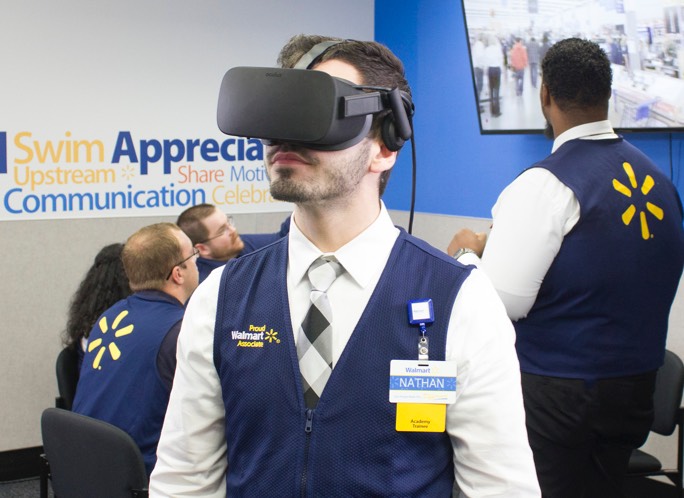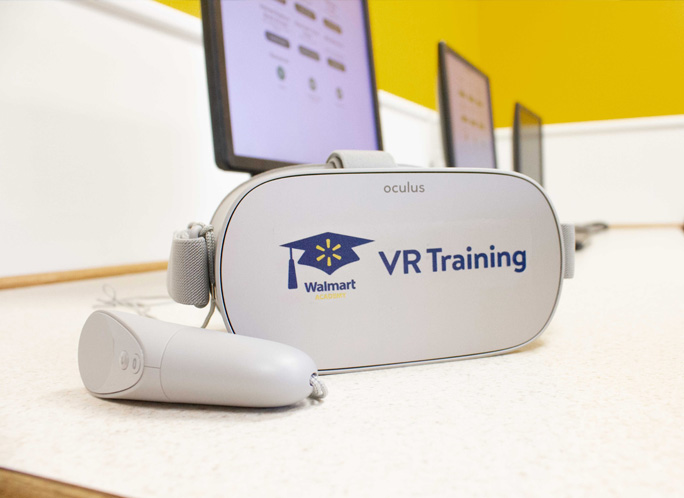Introduction
Walmart Ready to Change Retail
Ready for Anything: The Modern Retail Workforce
The retail industry is transforming. As the nature of work changes, Walmart is building a future where the workforce changes with it.
Nearly 16 million Americans — or more than 1 in 10 people — are employed in the retail industry, which collectively supports $1.6 trillion in labor income. A look at the numbers reveals retail has a wide reach.

42 million
direct and indirect jobs are supported by retail, from frontline employees to truck drivers to construction workers. In total, retail accounts for nearly a quarter of total national employment.
$2.6 trillion
is the retail industry’s GDP impact in the United States. That's roughly the total GDP of France.
Retail isn’t just about macroeconomic impact. It’s also about individual opportunity — retail is an avenue for people to build valuable skills and discover multiple pathways to success and mobility. Now the second-largest industry by employment behind only health care, retail remains a building block of the American experience.
Employment in Retail Jobs vs. Other Industries (in thousands)

Retail is the second-largest industry by employment.
The retail workforce is made up of an impressively diverse and representative sample of the U.S. population. It’s evident that retail has a unifying factor that appeals to nearly all demographics. Whether people find retail as a launching pad, a landing pad, or a new career path all its own, many Americans share the retail experience.
6 in 10
Americans have worked a retail job, and nearly a third (32%) of all first jobs were in retail.
It turns out, retail work is a commonality. The first job may not always form one’s long-term career, but the skills gained from it are carried into every job thereafter.
21%
of retail workers are going to school, and 21% are pursuing another career.
Few other industries offer the flexibility and learning opportunities of retail work. A survey from the National Retail Federation found that many part-time retail workers chose the industry for its flexibility, which allows them to learn and leverage valuable skills, even while they pursue other goals.
1 in 10
part-time employees are also stay-at-home parents, and 1 in 20 retail employees are over 65.
That same flexibility appeals to Americans who are fulfilling other life duties as well, such as ‘mom,’ ‘coach’ or ‘grandma.’
1 in 12
of America’s veterans work in retail, where they bring specialized leadership skills to any role they assume.
The industry is on its way to becoming a new career path for veterans, as retail companies are committing to meeting minimum hire numbers for this valuable group.
Hiring managers across industries agree: Retail experience is valuable. A survey of hiring managers shows retail develops skills and traits most sought in prospective employees.

80%
of hiring managers surveyed said the skills and traits they view as most important are the same as those most retail employees say they already use regularly.

71%
of hiring managers say that retail provides employees with foundational skills and experiences that are transferable to other industries and recommend employees have retail experience on their resume.
80%
of hiring managers surveyed said the skills and traits they view as most important are the same as those most retail employees say they already use regularly.
71%
of hiring managers say that retail provides employees with foundational skills and experiences that are transferable to other industries and recommend employees have retail experience on their resume.
Hover over your state to see how many people Walmart employs, use the dropdown menu to view the percentage of total retail jobs in the state held by Walmart associates, and turn the toggle on or off to see all Walmart locations.
Walmart locations
Largest private-sector employer
State
-
Walmart Associates
-
Total Retail Workforce
-
Walmart Employment as % of Total Retail
As retail continues to change, so too must its workforce. We consider that an opportunity. Through on-the-job experiences, team learning, training and education, Walmart is creating the next generation of the retail workforce.
We are empowering our associates by integrating cutting-edge technologies and providing improved training, benefits and mobility opportunities — all while offering ways for our associates to affordably advance their educations. Ultimately, our goal is to produce associates who are ready for success with Walmart and beyond. To learn more about all the ways we’re helping our associates succeed, check out our 2020 ESG Report.

Education
Walmart is making education accessible and affordable to its associates for only $1 a day.
Learn more
Retail Job Training
Walmart is giving a new generation of associates the skills to carry them through their careers.
Learn more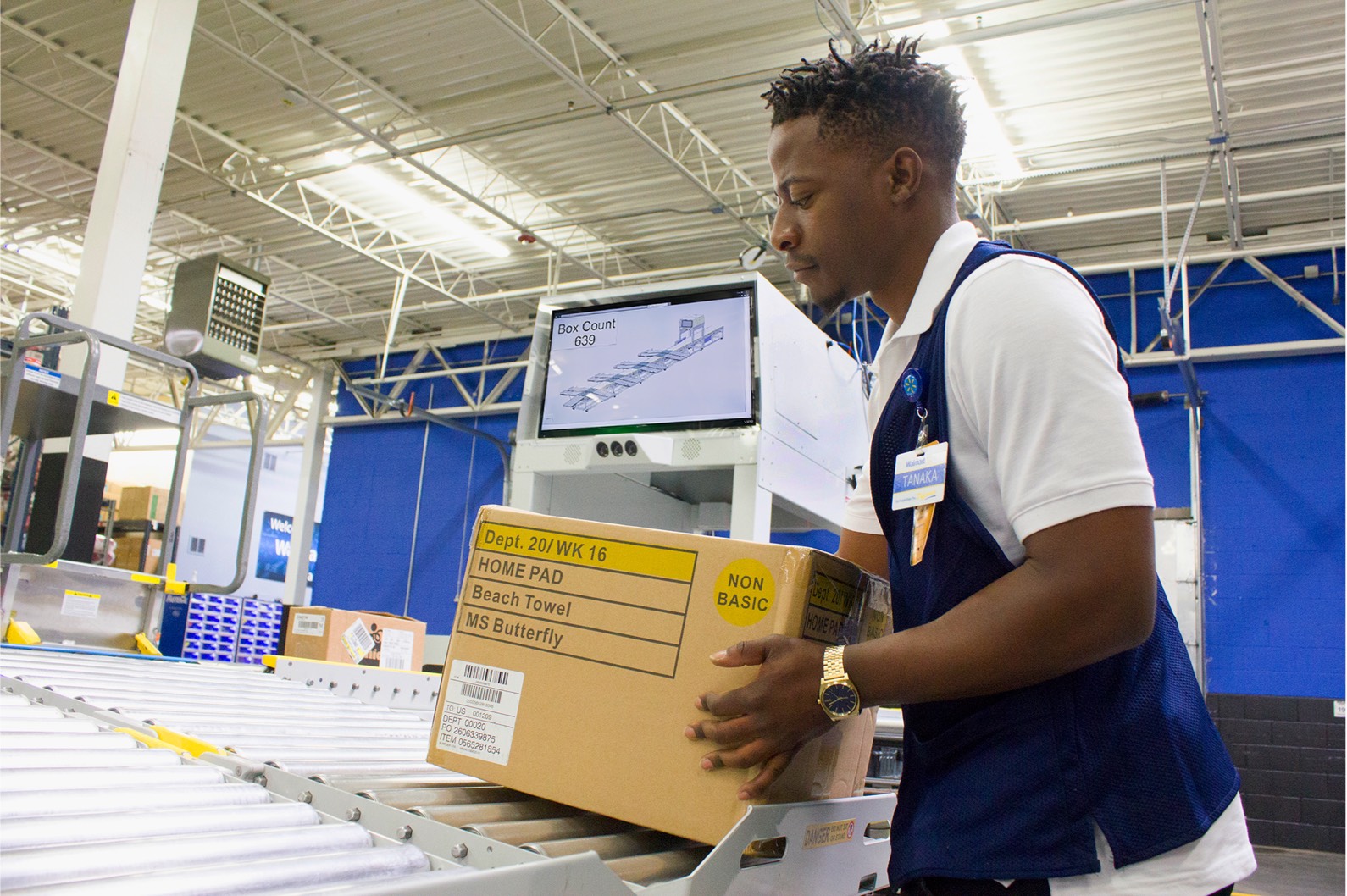
Education is an important pathway to mobility. Whether pursuing a GED, a trade certificate or a college degree, education opens doors to greater job opportunity. But education only empowers when it's affordable and accessible for all — an increasing challenge.
Whether it’s traditional college, a vocational program, or graduating high school, embracing lifelong learning is invaluable for the avenues it opens. Within retail specifically, continued education prepares people for the rapid pace of change in today’s workforce with additional skills and knowledge.
When employers commit to meeting their employees wherever they are on their education journeys, it creates a mutually beneficial outlook, placing the workforce first while trying to build better futures for the business and its people.

Jobs are forever evolving. That’s why creating a modern workforce means creating more than one option to learn. As college gets more expensive, and requisite skills continue to change, industries and educators alike are re-evaluating what lies beyond the degree. Whether re-skilling, upskilling or just investing in employee learning opportunities, there are multiple pathways to education that can change individual outcomes and set lives on new paths.
6 in 10
millennials say they’re open to new job opportunities.
21%
of millennials say they’ve changed jobs within the past year.
Just because pursuing education is valuable doesn't mean it's easy to do. Here are some of the roadblocks that can stop would-be learners, which only get bigger for those holding down a job.
Where someone lives directly impacts their access to post-secondary education and can ultimately determine whether they pursue it at all.
Responsibilities can’t always be put on hold to attend college. From family demands to work realities, life itself often gets in the way of potential learning.
As the price of college continues to increase, it presents roadblocks due to difficult decisions, such as: Do I go to school or pay my rent instead?
There’s a swath of Americans who live in a desert without knowing it. These are education deserts: regions with limited geographic proximity to broad-access colleges. As one of the roadblocks to college, physical location has an impact on prospective students all over the country.

11 million
Americans live more than 60 minutes from a broad-access public college. That’s more than the population of Madison, Memphis, Mesa, Miami, Milwaukee, Minneapolis and New York City — combined.
6 out of 10
college freshmen attend school more than 50 miles from home.
Walmart’s associate education benefit, Live Better U, offers 1.5 million associates across the country a chance at online educational opportunities that meet them wherever they are in their journey. From formal education to trade certificates and digital skills programs, LBU’s mission is a simple one: Make education of all sorts accessible and affordable to associates.

And for associates seeking college degrees, LBU presents a unique opportunity. Walmart serves communities across America, including those in education deserts, where the presence of a Walmart store also means a pathway to learning. Walmart has transformed into essentially 4,800 educational hubs across the U.S., many where higher-learning institutions are either entirely absent or limited to a single community college. But regardless of where prospective students are located, Walmart is offering associates the opportunity to earn a degree for $1 a day.
1.5 million
approximate Walmart associates in the U.S. means opportunity for ~1.5 million people to attend college debt-free.
29,457
students served since program launch
What’s LBU’s impact on learning? Use the map below to see how many LBU learners there are by state to date.
Education Deserts (as defined by ACE / CPRS report)
Walmart locations
State
-
Another roadblock to education is, for many Americans, plain and simple: life. The unexpected happens, plans change and education can become out of reach in the blink of an eye. Not to mention, navigating both work and home duties is challenging while you try to attend school. When we studied the best ways to build an education access program in particular, it became clear that many models are not designed with the realities of the working learner in mind.

Nearly half (49.3%) of students who dropped out of high school or college cited need for money as their primary reason. But finances weren’t the only factor. Students named disinterest in classes (32.4%), lack of support (15%) and being a parent (12.8%) as other contributing factors.
43%
of full-time undergraduate students work either full-time or part-time to support their education.
22%
of undergraduate students are parents.
College students who are parents have nearly 2x the student loan debt of students overall.
Learning potential and earning potential tend to have an inverse relationship. This is especially true for working learners who choose to pursue a college degree. This is a gap LBU aims to fill.

For LBU students, working while they go to school is also how they go to school. Because the LBU benefit is contingent on working at Walmart, stores and clubs around the country become access points to education.
Full-time Employment and Full-Time College Attendance Among Independent and Dependent Students
While the need to work typically limits the chances that a person will enroll in college in the first place, it also significantly affects the odds that same person will remain enrolled. Full-time students are 16% more likely to remain enrolled than part-time students.
How Likely are College Students to Stay Enrolled?
Though it can prove difficult to finish additional education, especially while working, Walmart purposefully made completion rates a key success measurement for the LBU program. LBU is designed to support working adult learners, meeting associates wherever they are on their educational journeys. A focus on completion has driven the development of meaningful supportive elements, like free student coaching and college credit for Walmart training.
For many Americans, paying for college is impossible without accruing debt. And no wonder: Take a look at the average total annual cost of tuition — excluding books, housing, food, etc. — at the following institution types:
Over the past three decades, tuition at four-year colleges has more than doubled, even after adjusting for inflation.
$365
LBU
$3,730
Public 2-Year in District (In state)
10x more expensive than LBU
$10,440
Public 4-Year Colleges or Universities (In state)
29x more expensive
$26,820
Public 4-Year Colleges or Universities (Out of state)
73x more expensive
$36,880
Private 4-Year Colleges or Universities
101x more expensive
The cost of college represents a massive expenditure for most. But with access to education for just $1 a day, as of February 2020, LBU learners have already amassed an impressive savings of more than $42 million — which sets them up to yield an enormous return on their education investment. Hover over your state to learn more about student debt, and use the dropdown menu to see where LBU is adding up to major savings.
Walmart locations
State
-
Average Student Loan Debt
-
LBU Credits Completed
-
Estimated Total LBU Student Savings
-
Average Savings per LBU Student
Explore profiles of LBU students around the country who have found success and launched careers through the Walmart associate education benefit, Live Better U.

Shawnta Rhodes – Savannah, GA

Janine Johnson – South Florida, FL

MaiKayla Pierson – Perrysburg, OH

Harry Weist – Orlando, FL

Ana Pedro Hipalito – Sanger, TX

Dustin Clemons – Highland, IL

Zaguru Zamani Karffa – Erwin, NC

John Jackson – Concord, NH

Demetrius Watkins – New Albany, KY

Cathleen Wigenbach – Cortland, NY
Retail work offers the chance for fulfilling, lifelong careers and upward mobility. But to ensure they can support career growth and opportunity, retailers are turning toward training to help close employee skills gaps and create more universal and transferable skillsets to advance any career.
Retail jobs have the potential to offer lifelong opportunity. They afford upward mobility and multiple pathways that can advance people within the retail industry, or launch new career paths.
62%
of retail store managers say they reached their current position by “moving up the ranks” in the industry, for example starting as a cashier or shelf-stocker.
80%+
of employees in the retail industry do not have college degrees.
50%+
of retail employees don’t have any post-secondary education.
The retail industry supports 42 million jobs — from young adults in their first job out of high school to professionals in career positions. Because there are so many diverse roles to fill in retail, the industry makes a great training ground. Whether increasing digital literacy, or helping employees gain nuanced soft skills to better serve customers, time spent working in retail can offer a career’s worth of skills.
These are top traits important to retail hiring managers, along with the percent of retail employees who say they already use these skills regularly.

42 million
jobs are supported by the retail industry.
Retail work is about much more than just ‘doing the job.’ It’s inherently people-focused, and being a great retail employee requires the soft skills to communicate thoughtfully, from managing people to creating seamless customer experiences.
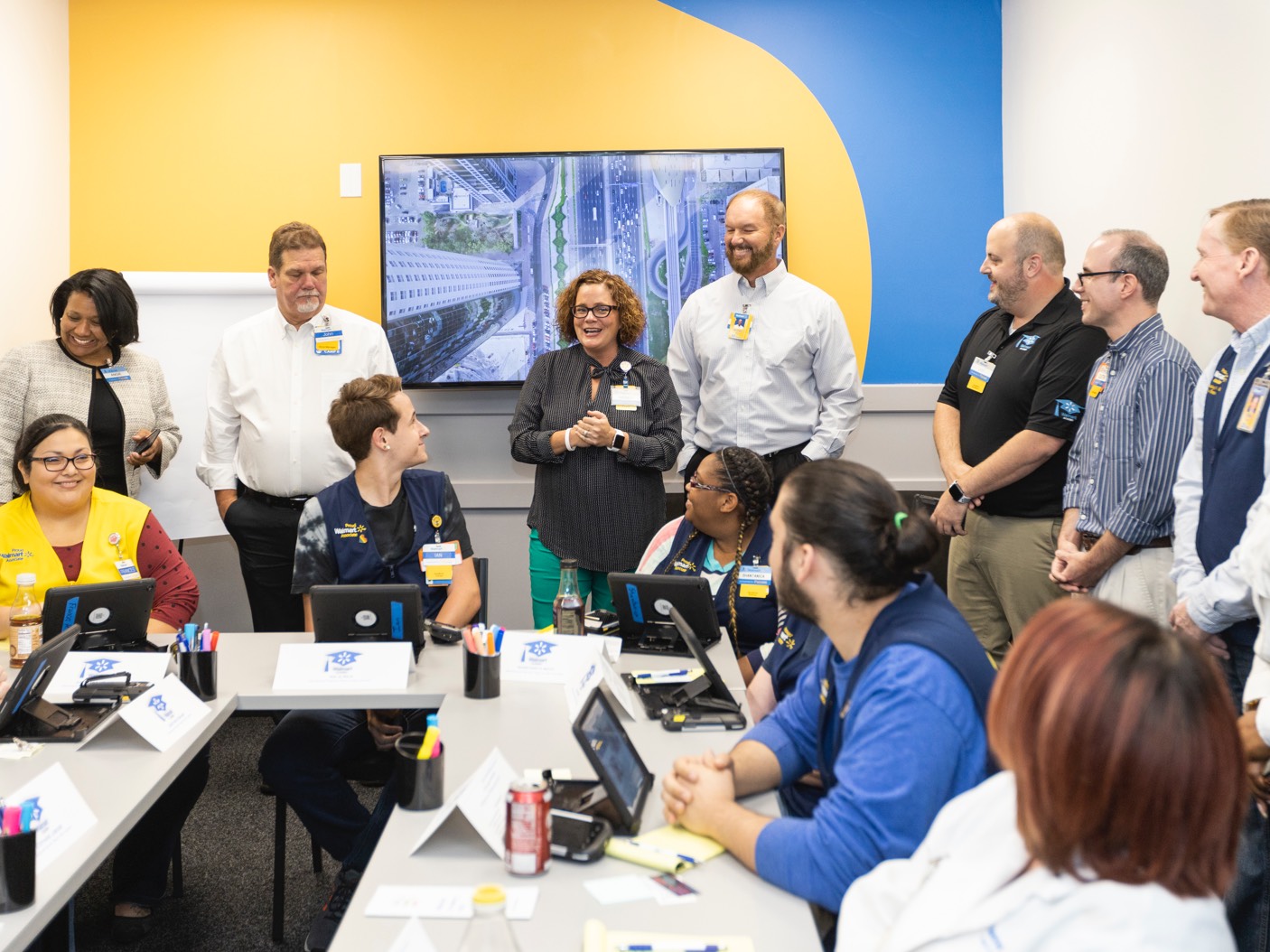
It’s here we find the opportunity to help enhance soft skills in retail.
82%
of employers look for communication skills on a candidate’s resume, and 79% look for the ability to work in a team.
The retail industry has been fundamentally and positively impacted by technology. It can be easy to think of macro-level changes, like those that have come to supply chains around the world, but it can be harder to think of micro-level changes, like the impacts on individual associates by technology.
According to an Associated Press study, the number of skills required in entry-level job postings has increased since 2010. As the role of technology in stores has advanced, the skills expected of retail employees have also grown. It’s here we find the opportunity to help enhance digital literacy skills.
Retail employees use everything from the basic to the more complex when it comes to technology. This ranges from touchscreen tablets and mobile-based point-of-sale systems to programming autonomous robotics, which in turn, allows employees to give more attention and time to customer service.
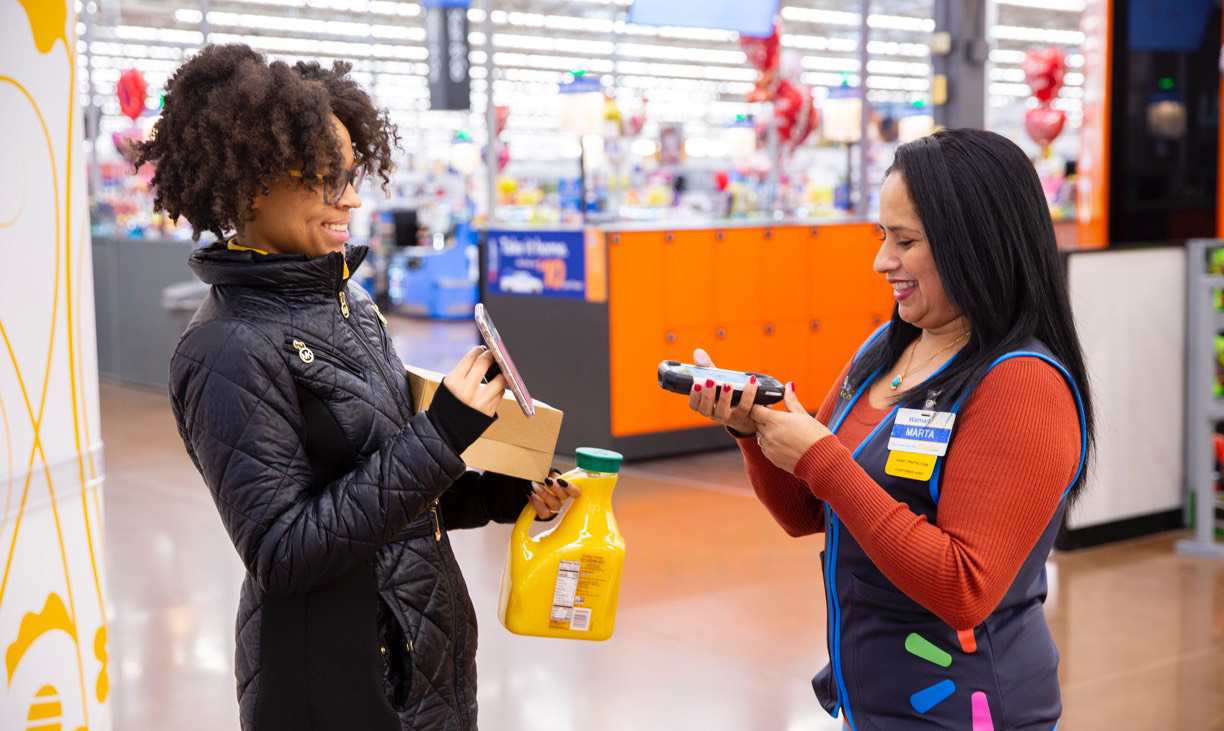
20 million
service sector workers lack “foundational skills,” including basic problem solving with technology.
3 out of 4
retail workers demonstrate a need for growth in digital problem-solving skills in things like sending an email, or opening the proper application on a computer.

Tackling these training gaps with such a large, diverse group as the retail workforce is a real challenge. Here’s why:
Clearly, there’s a lot expected of the retail worker. From strong soft skills to digital problem-solving and technical literacy, workers need training to meet expectations and excel in their job.
Although training is aimed at empowering employees to better meet the customer’s needs, Walmart believes it’s the duty of employers to offer something greater: Training that provides universal and transferable skills that employees can take with them if they decide to look beyond retail.
Walmart’s mission to provide modern retail training at scale to associates across the country gave rise to Walmart Academies. Walmart has built 201 Academies nationwide and, in fiscal year 2020 alone, completed 1.1 million total associate trainings through instructor-led and virtual reality curriculums.
Walmart Academy locations
State
-
Participants Trained
-
% of Eligible Associates Trained
Hands-on training is hands down the most popular learning style. According to a study conducted by Harris Interactive, these are the most popular ways new to learn something new in an education setting:
What Learning Methods Work Best for Americans?

50+%
Walmart Academy training goes beyond the classroom — in fact, more than half of associates' training is scheduled to take place on the sales floor.
Academies focus on reinforcing and further developing soft skills that help associates communicate and lead more effectively. Through Academy courses, associates are able to gain applicable experience not only in their roles, but in managing people, too.
A Selection of Academy Foundational Leadership Courses
Each Academy class is hands-on, so whether learning best practices for stocking, or how to empower their team, associates leave with valuable experience. We think it shows.
More than half (55%) of workers say they learn work-related things from coworkers and managers at least once a week, according to the National Skills Coalition. This makes Academies even more powerful: Training cascades from the source.
Walmart Academies are made to ensure associates go into the field with all the skills they need to excel. And while many of those skills are operational, the journey to leadership can’t stop there. Academies also focus on reinforcing and further developing soft skills that help associates communicate and lead more effectively.
To empower our associates with additional digital literacy skillsets, Walmart Academies developed a curriculum that trains associates using 100% digital interfaces, from iPads to virtual reality headsets to handheld devices. Courses use absolutely no printed materials — which puts the focus on tech and has less environmental impact.
Academy courses have seen especially strong results when utilizing virtual reality to teach leadership skills — like how to have a hard conversation with another associate on sensitive topics.
Beyond the Academy classroom, Oculus Go virtual reality training headsets are in both Supercenters and Neighborhood Markets to bring training to associates where they work and to further embed the concept of continuous learning in the Walmart culture.
Virtual conference-style teaching via apps like Zoom has reinforced this notion and has given the Walmart Academies even greater reach. Associates have access to information in-store and can find just-in-time training via the Academy app, prioritizing learning wherever they are.
10-15%
increase in assessment scores when VR training is incorporated into the classroom, on average.
Since the Academy program launched, Walmart has expanded the curriculum to cover more than 65 positions, including customer service manager, online grocery pickup and assistant store manager.

1,861,835
total associate trainings completed
+53.3%
greater earning potential for assistant store managers who are promoted from department manager upon completion of Academy training.
Explore profiles of Walmart associates who have found success and advanced their careers through the Walmart Academy.

Fariha Waseem – North Brigham, NJ

Angel Santoyo – Los Banos, CA

Justin Dillon – Viera, FL

Samantha Stewart – St. Louis, MO

Anthony Alvarez – Jefferson City, MO

David Figueroa – Hudson, FL

Esther Morales – Williamstown, NJ

NaToya Champion — Memphis, TN
Click here to learn more
information about the claims
made throughout this site.



